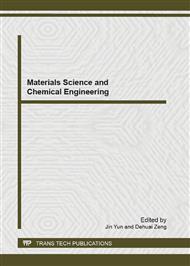p.554
p.557
p.560
p.566
p.572
p.578
p.584
p.590
p.596
Adsorption of Aqueous Azo Dye Using Waste Carbon Fiber Activated by Microwaves and Potassium Hydroxide
Abstract:
This study investigates the activation of waste carbon fiber by microwave heating and potassium hydroxide and the adsorption of aqueous dye RB19 using said modified waste carbon fiber. Heating was performed in a microwave that was set to 900 W from 20 to 60 minutes (M20, M40, and M60). The specific surface areas of the original waste carbon fiber (WCF), M20, M40, and M60were 2 to489 m2/g. M40 had the highest specific surface area and an acceptable yield of 62%. In adsorption experiments at 57°C, the original waste carbon fiber adsorbed only 15 mg of dye/g of fiber. The results reveal that the capacity of adsorption increased when the waste carbon fibers were modified by activation with microwave and potassium hydroxide. Remarkably, M40 was the most suitable absorbent of aqueous dye RB19 and it had the highest capacity of 202 mg/g.
Info:
Periodical:
Pages:
572-577
Citation:
Online since:
May 2013
Authors:
Keywords:
Price:
Сopyright:
© 2013 Trans Tech Publications Ltd. All Rights Reserved
Share:
Citation:


